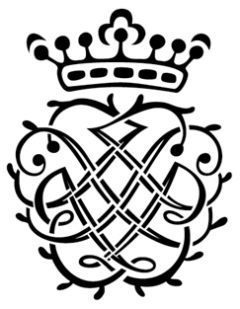Contrapunctus 14 of The Art of Fugue is known as the unfinished, last Fugue of Johann Sebastian Bach.
Two early versions of Contrapunctus 14 (bwv 1080-19) remains, the autograph (Mus. Ms. P200, Deutsche Staatsbibliothek, Berlin) consisting of 5 pages and the version appeared in the first edition of the Art of Fuge with title ‘Fuga a 3 Soggetti’. The first revised version of Art of Fugue appeared after Bach’s dead and was compiled by Bach’s son Carl Philipp Emanuel Bach.
The fugue has an open end at bar 239. On the last page of the autograph, C.Ph. E. Bach, who was close to Bach in his last days, noted that his father died before finishing this fuga. Through the years several theories are made around the question if Bach made this fugue at the end of his life and what an appropriate end of the unfinished fugue would be. In many studies a completion is made of Contrapunctus 14, among others (Wolff, 1975), (Nottebohm, 1881) and (Hughes, 2006), all starting at the last bar 239.
Nottebohm discovers that the common theme of the Art of Fugue fits with the three themes of Contrapunctus 14. Wolff continues this idea and states in his X-fragment theory (Wolff, 1975) that the intention of Bach had been to compose a quadrupole fugue. Lately this theory is disproved, among others by Hughes (2006), who states that Bach had the intention to leave this last fugue unfinished and recently by Büsing (2015). All these studies assume an attachment after bar 239.
References
Büsing, Otfried. Hatte Nottebohm recht? Überlegungen zur Fuga a 3 Soggetti aus Bachs Kunst der Fuge. Bach Jahrbuch 2015, ISBN 978-3-374-04320-0, S193.
Hughes, Indra Nicholas Martindale. Accident or Design? New theories on the unfinished Contrapunctus 14 in J.S. Bach’s The Art of Fugue BWV 1080. University of Auckland, 2006.
Wolff, C (1975) The Last Fugue: Unfinished? Current Musiciology 19 (1975): 71-77 (part of Bagnall, Baker, et al).
